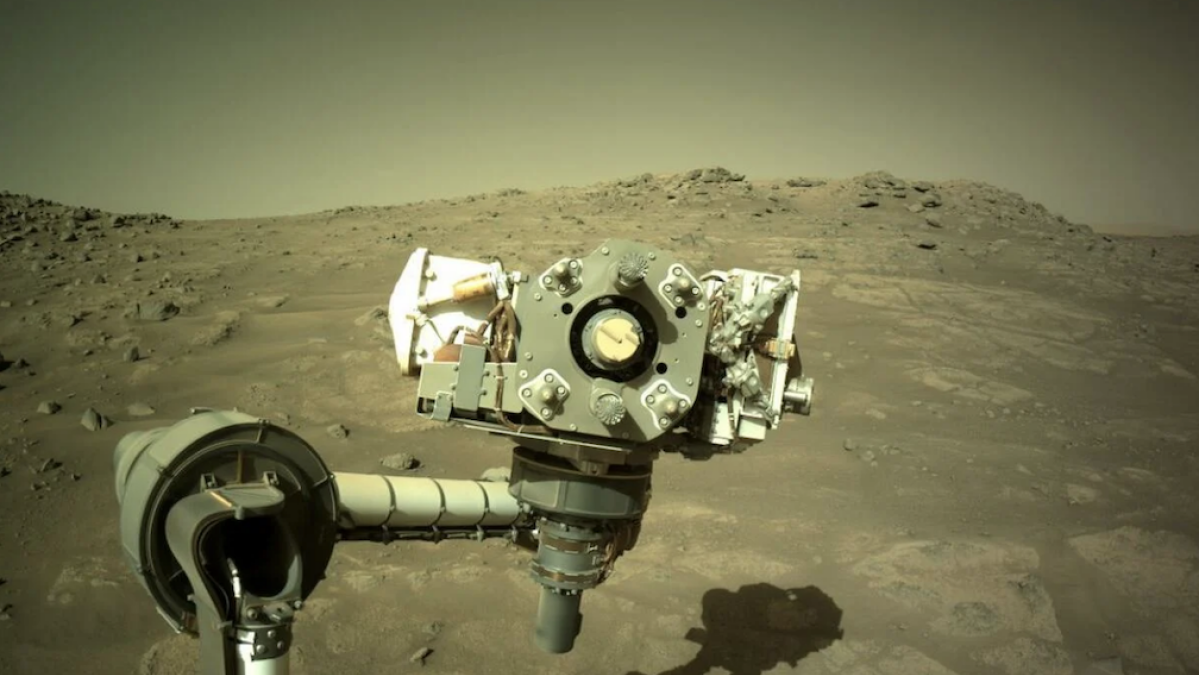
NASA has used a number of eyebrow-raising words to describe their new Martian find: “fascinating,” “intriguing,” “compelling,” and “mind-bending.”
The space agency’s Perseverance rover recently drilled into a Mars rock, where the six-wheeled robot had detected organic molecules (aka the “building blocks of life” as we know it). The robot collected a sample, and inside scientists spotted a telltale composition that suggests the potential of ancient microbial life. “The rock exhibits chemical signatures and structures that could possibly have been formed by life billions of years ago when the area being explored by the rover contained running water,” NASA said in a statement. But, crucially, much more research, over many years, is needed to confirm this possibility.
Indeed, regions on Mars once gushed with water, with roaring rivers and expansive lakes. These watery environs could have set the stage for primitive life to evolve.
NASA scientist viewed first Voyager images. What he saw gave him chills.
In the image below, you can see the novel Martian structures NASA scientists observed in this rock. They’re white splotches surrounded by black halos dubbed “leopard spots.”
“These spots are a big surprise,” David Flannery, an astrobiologist at the Queensland University of Technology and member of the Perseverance science team, said in a statement. “On Earth, these types of features in rocks are often associated with the fossilized record of microbes living in the subsurface.”
That’s quite an intriguing connection. These spots are formed by chemical reactions on Earth, which can release iron and phosphate (an important nutrient), and supply microbes with energy.
Mashable Light Speed
The “leopard spot” splotches found in a new Mars rock sample.
Credit: NASA / JPL-Caltech / ASU / MSSS
NASA planetary scientists are certainly excited.
“As a rock geek/scientist and as the Director of @NASAJPL — this is the kind of discovery you hope for — where mind-bending observations make your heart beat just a little faster,” NASA’s Laurie Leshin posted online.
“This is more than intriguing, it’s really exciting! We must bring that sample to Earth for analysis in our best labs!” Rosaly Lopes, a senior research scientist at NASA’s Jet Propulsion Laboratory, wrote.
But, of course, the space agency has also tempered expectations until more is known. Non-biological processes could have created the leopard splotches, such as mineral deposits from past flows of water. In the announcement, the agency included the helpful graphic below, showing the Confidence of Life Detection scale, or CoLD. With this detection, NASA is at number one.

Credit: NASA / Aaron Gronstal
And, crucially, to move up the scale, the sample (from a rock named Cheyava Falls) must be closely analyzed in labs on Earth, with far more instruments than the distant, car-sized rover can carry. This can prove if non-biological factors actually formed the structures, confirm the presence of past life, rule out other hypotheses, and beyond. NASA’s Mars Sample Return mission, however, is in jeopardy. It would cost around $11 billion, a price the space agency can’t afford. The agency now seeks a financially feasible plan for the complex endeavor, which would retrieve samples and rocket them back to Earth.
Until then, these compelling structures will largely remain just that.
“We have zapped that rock with lasers and X-rays and imaged it literally day and night from just about every angle imaginable,” said Perseverance project scientist Ken Farley. “Scientifically, Perseverance has nothing more to give. To fully understand what really happened in that Martian river valley at Jezero Crater billions of years ago, we’d want to bring the Cheyava Falls sample back to Earth, so it can be studied with the powerful instruments available in laboratories.”